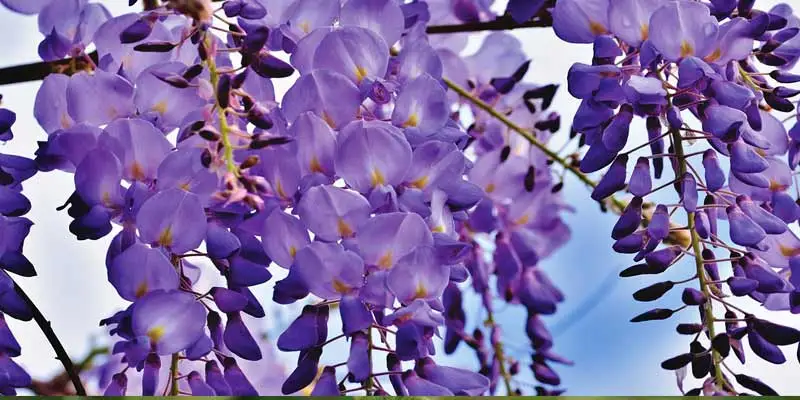Wisteria is a beautiful flowering plant that can add some elegance and charm to your yard. It’s a perennial vine with flowers that resemble peaches and produces clusters of waxy white, purple, or blue flowers that grow on woody stems in spring and summer.
When To Plant Wisteria?
You can plant wisteria at any time during the growing season if you live in USDA zone 4 or above.
Because wisteria does not tolerate cold temps well, if you reside outside of this range, you may need to purchase potted plants from a yard shop or nursery rather than growing one from seed or cuttings from an established plant.
Where Is The Best Place To Plant Wisteria?
The best spot to plant your wisteria is determined by your location as well as the type of soil you have. If you reside in an area with cold winters and mild summers, choose a location that receives partial shade and plenty of water all year.
Wisteria vines are thirsty plants, so plant them in an area with excellent drainage so they don’t become waterlogged.
If you reside in a climate where wisteria does not naturally grow, you can grow it indoors. Wisterias are simple to cultivate indoors as long as they get plenty of sunlight and enough water to stay hydrated at all times.
What Is The Best Month To Plant Wisteria?
The ideal time to plant wisteria is April through May in USDA hardiness zones 3 through 8 (and sometimes into zone 9). Keep in mind that the first year after planting a new vine is critical because it needs time to become established before winter arrives.
If you plant it too soon, the roots will not have enough time to develop deep enough into the soil before the cold weather arrives, and they will be damaged by frost heaving or freeze damage. If you plant it too late, you will lose out on spring blooms!
How Long Does Wisteria Take To Grow?
It takes wisteria at least two years to mature due to its sluggish growth. The vines can reach lengths of 25 to 30 feet (7.6 to 9 meters) when they are regularly watered and placed in full light.
The plants will grow much slower in partial shade or under trees where they don’t get enough sunlight or water.
The vines bear their first flowers at about three years old, although they may produce some flowers sooner if they receive adequate water and fertilizer after they’re established in their location. If you want more flowers sooner than three years, cut back any dead wood from previous years’ growth each spring before new growth begins. This encourages new growth without disturbing too much-existing growth.
Conclusion
Wisteria is a lovely plant that will bring color and fragrance to your yard. You should have success cultivating wisteria as long as you know when to plant it and where to place it in your yard!


